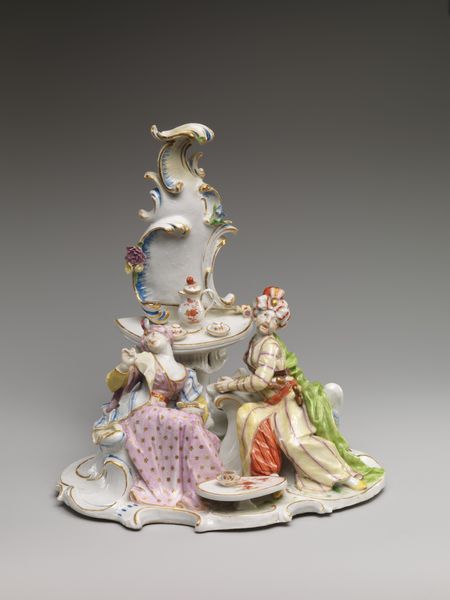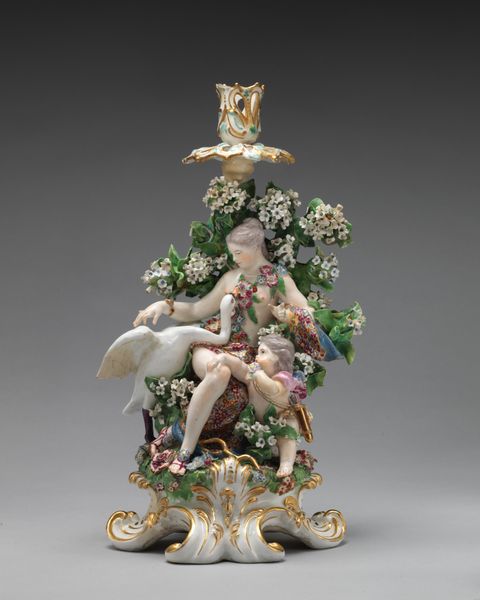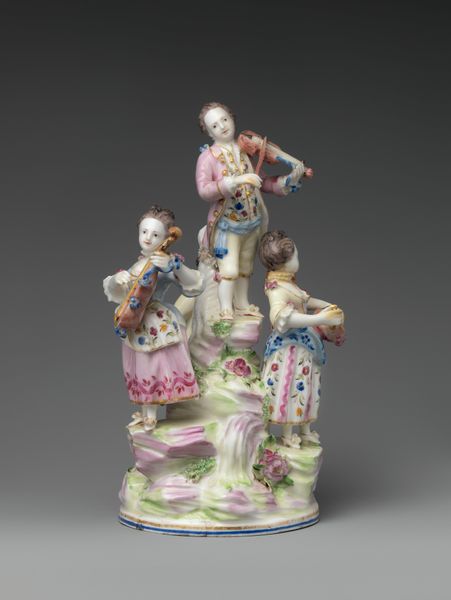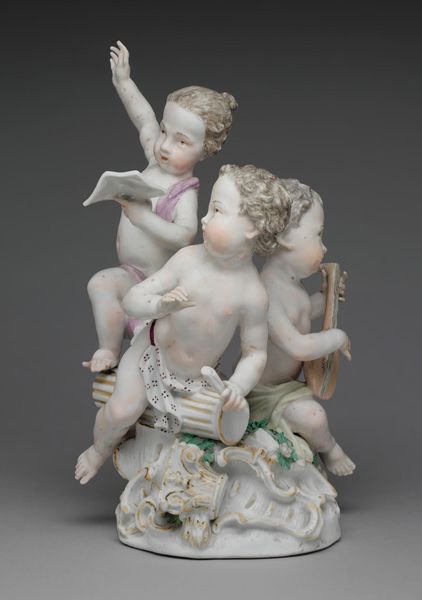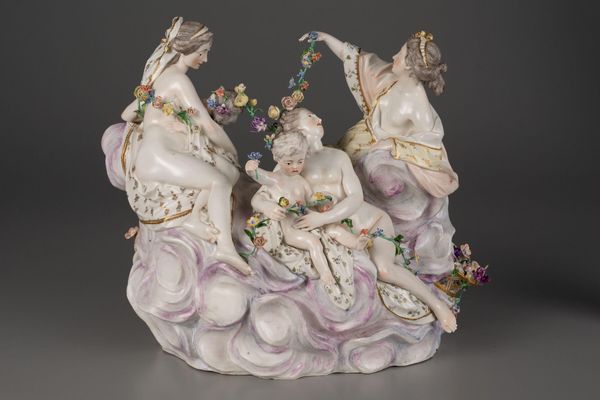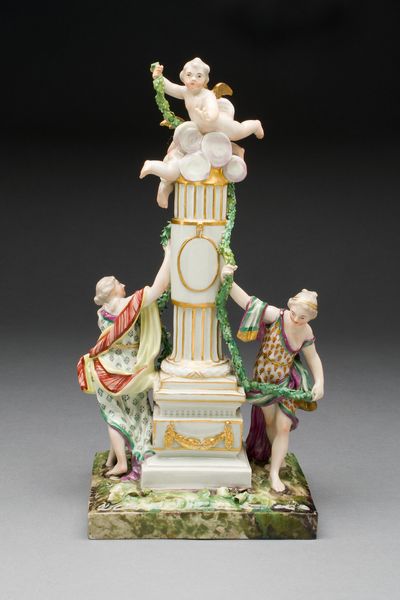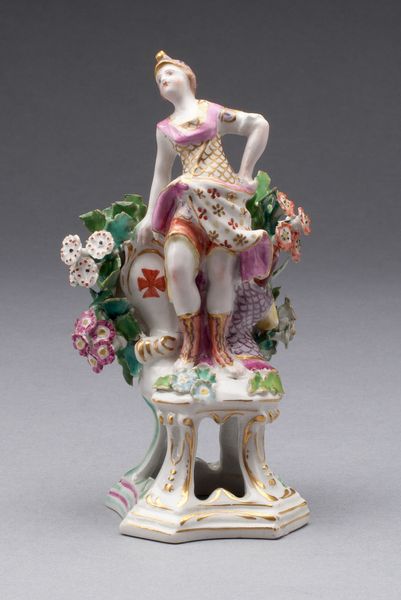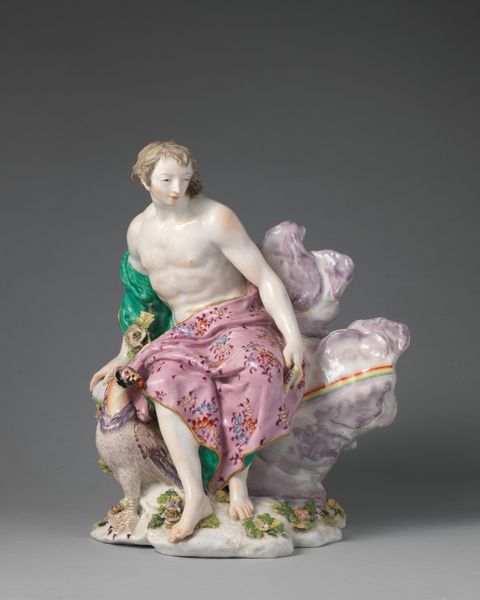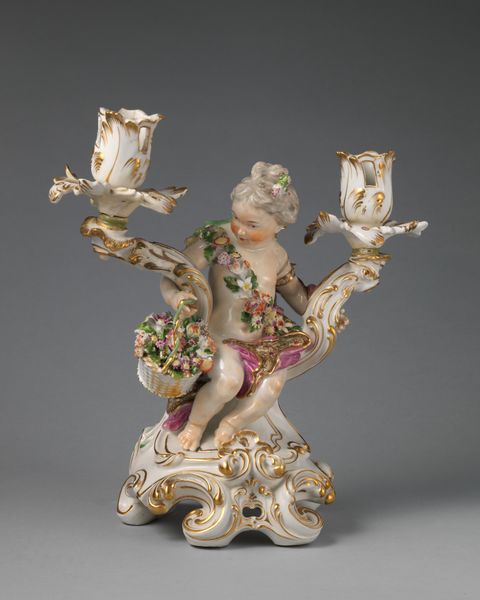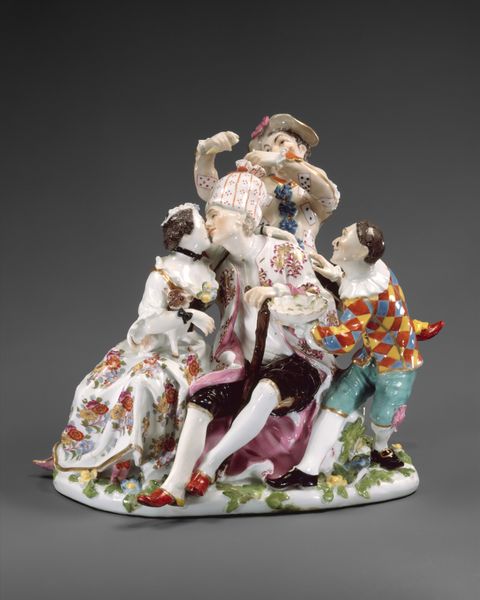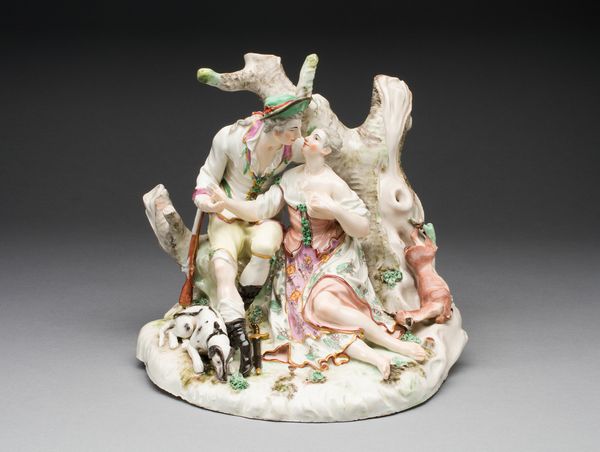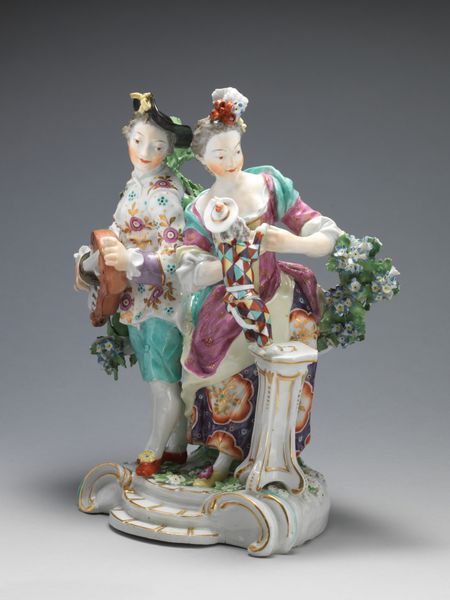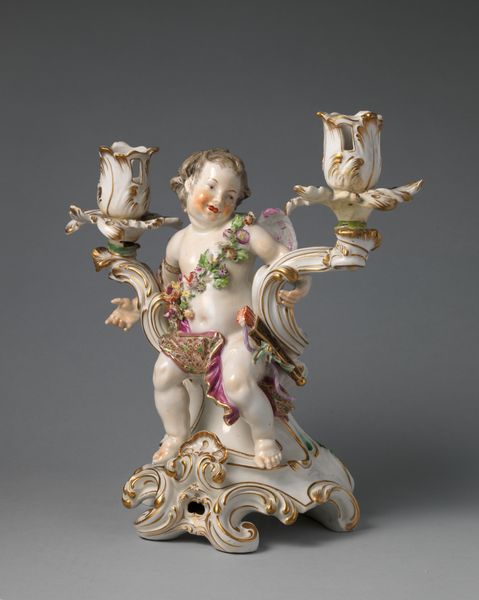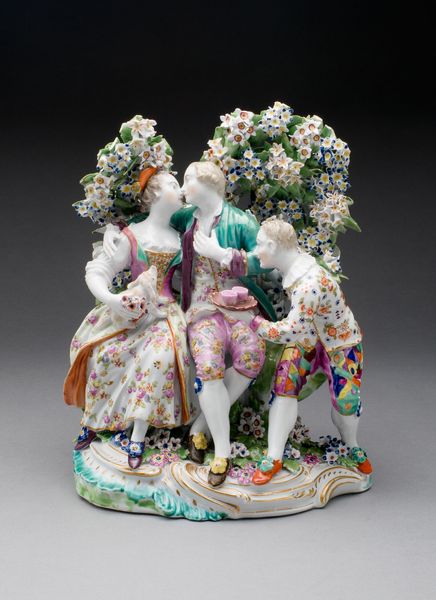
#
ornate
#
3d sculpting
#
3d printed part
#
child design
#
jewelry design
#
structure design
#
3d character model
#
sculptural image
#
3d character modeling
#
cartoon theme
Dimensions: height 24 cm, width 21.5 cm, depth 19.3 cm
Copyright: Rijks Museum: Open Domain
Editor: Right now we’re looking at “Spring,” a porcelain sculpture made by Porzellanmanufaktur Frankenthal around 1755 to 1760. It's… well, it’s definitely something! All these cherubic figures intertwined… it's giving me serious Rococo vibes, but also makes me wonder – what’s with all the putti? What do you make of it? Curator: Putti, putti everywhere! These cherubic figures weren't just decoration; they were visual shorthand for innocence, abundance, and earthly delights. This sculpture isn’t just capturing "Spring"; it's bottling the whole idea of youthful joy and fertility. Frankenthal, like many porcelain factories, was aiming to capture the tastes of the elite. Think elaborate gardens, masquerade balls… these figurines were conversation starters, little explosions of courtly amusement meant to reflect their patron's sophisticated, playful worldview. The artist captured an effervescent mood, wouldn’t you say? Editor: Definitely effervescent! Almost too effervescent for my modern sensibilities. So it's all about capturing a certain lifestyle. Does the porcelain itself add to that meaning? Curator: Absolutely! Porcelain in the 18th century was like the iPhone of today – incredibly desirable, technologically advanced, and a status symbol. Owning a piece like this signalled not only wealth but also taste, an understanding of artistry. It was brittle, rare, and easily broken! Editor: So you're buying something expensive, fragile, and essentially useless as a flex. I guess some things never change. What’s your favourite part of the piece? Curator: For me, it’s how dynamic it is. It appears almost unstable yet refined, reflecting the complex lives of the nobility that it was designed to enchant. Editor: It's interesting to consider the kind of playful world this object came from. I'll definitely be seeing porcelain differently now!
